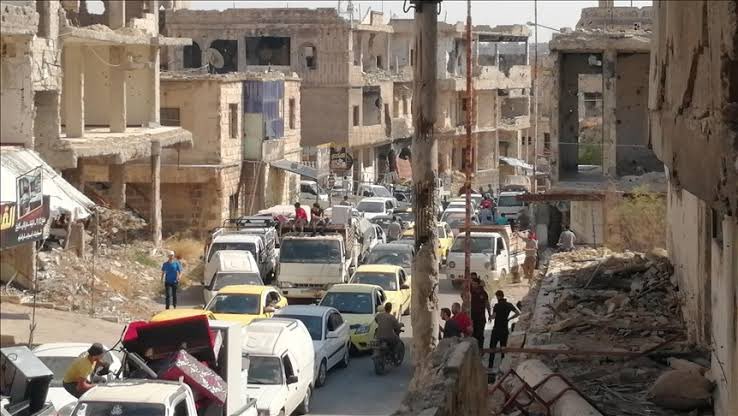
As we speak the people of #Daraa are dying under the barrage of rockets and artillery attacks by the Syrian regime forces and Iranian militias. The humanitarian and security situation is the worst ever since the siege began 70 days ago. 1/ #SyriaIsNotSafe 

The militias of the Fourth Division and Iran are trying, to advance towards Daraa al-Balad and the refugee camps in Daraa under heavy cover of fire with “elephant” missiles and hundreds of rocket-propelled grenades. 2/ horanfree.com/?p=9755
Hundreds of families have been displaced from Tafas and Jillin in west #Daraa as attacks intensify. 3/ 

What is happening in #Daraa is a live example of the failure of the “reconciliation agreements” on Russia and the regime’s behalf, and their lack of commitment to building any confidence measures. 4/ syacd.org/reconciliation…
The Syrian regime, alongside its Russian and Iranian allies, have demonstrated Daraa to be part of a broader plan to engineer and cement forced displacement with the goal of creating Assad’s “useful #Syria”. 5/ syacd.org/daraa-reveals-…
In turn, spokesperson for the Daraa Negotiating Committee announced the collapse of negotiations with the regime, due to the regime’s intransigence in imposing its “harsh” conditions. 6/
This is in addition to the regime’s failure to respect the ceasefire, and the advance of the Fourth Division militias and their attempt to storm the city of Daraa from several sides. 7/
The civilians in Daraa are in a terrible situation; they don't know where to go, and they have to choose displacement if they want to live. As this goes on, the world is deafeningly quiet. 8/
What is happening in Daraa clearly demonstrates that despite Russian guarantees and "reconciliation" the regime will not tolerate any Syrians which it sees as anti-regime. 9/ syacd.org/timeline/syria…
And if this is the case with Daraa and the people who remained/returned there, how can the world imagine a safe return for millions of Syrians that the regime sees as cancer? 10/10 m.arabi21.com/Story/1114175
• • •
Missing some Tweet in this thread? You can try to
force a refresh










